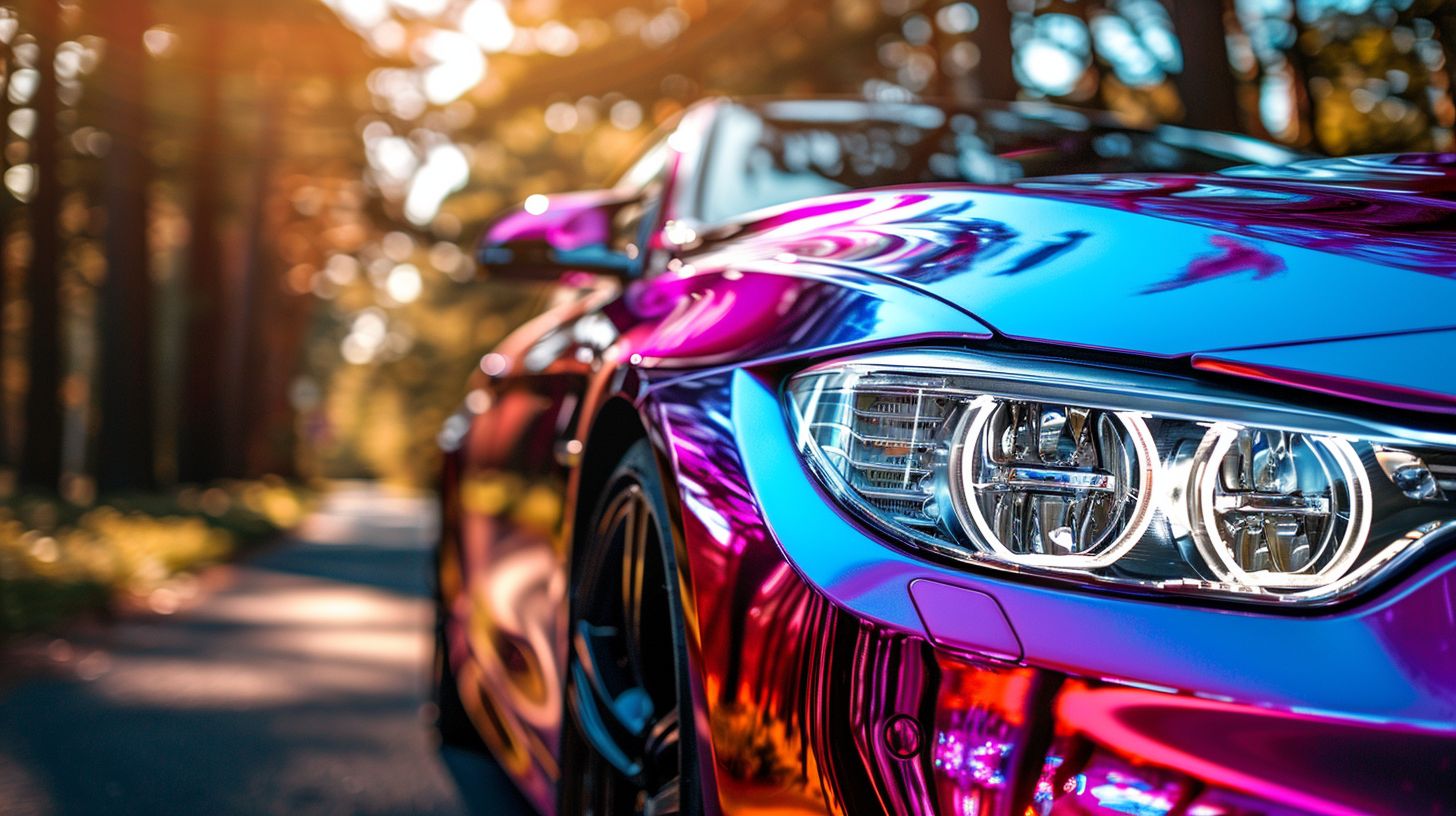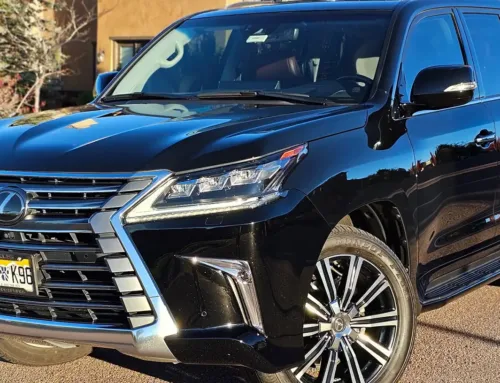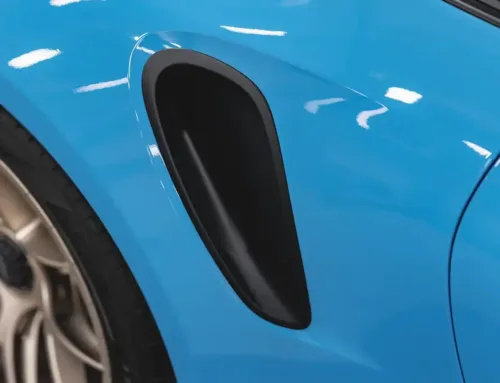Paint correction is a professional detailing process that removes surface imperfections from your vehicle’s paint, including swirl marks, scratches, oxidation, and water spots.
Is paint correction worth it though? For vehicle owners who value their car’s appearance and resale value, paint correction offers significant returns on investment. The process typically costs between $500 to $2,500 depending on your vehicle’s size and paint condition, but can increase resale value by protecting and enhancing your paint’s appearance.
When combined with protective coatings like ceramic coating and/or paint protection film, paint correction becomes an essential foundation for long-term paint preservation.
Key Takeaways
- Paint correction can increase your vehicle’s resale value by 10-20% when properly maintained
- Professional paint correction costs range from $500-$2,500 based on vehicle size and paint condition
- The process permanently removes surface imperfections but requires protective coatings for lasting results
- Paint correction is essential before applying ceramic coatings or paint protection film
- Professional expertise ensures safe, effective results without damaging your clear coat
Table of Contents
- What Is Paint Correction?
- How Paint Correction Impacts Your Vehicle’s Value
- Paint Correction vs. Traditional Detailing
- The Paint Correction Process Explained
- When Your Vehicle Needs Paint Correction
- Paint Protection After Correction
- Professional vs. DIY Paint Correction
- Making the Investment Decision
- Conclusion
- Frequently Asked Questions
What Is Paint Correction?

Paint correction represents the pinnacle of automotive detailing craftsmanship. Unlike a simple car wash or basic detail, paint correction is a meticulous process that removes imperfections embedded in your vehicle’s clear coat. These imperfections include swirl marks from improper washing, light scratches from daily driving, water spots from hard water, and oxidation from UV exposure.
At Springs Detailing, we’ve perfected this art over 20 years of experience serving luxury car dealerships and discerning private owners in Colorado Springs. The process involves carefully removing a microscopic layer of clear coat to reveal the flawless paint beneath, creating a mirror-like finish that transforms your vehicle’s appearance.
The difference between paint correction and regular detailing is like comparing surgery to a bandage. While traditional detailing cleans and temporarily enhances your paint’s appearance, paint correction actually fixes the underlying issues. This restoration process brings back that showroom shine you fell in love with when you first saw your vehicle.
Shameless Plug: Intensive paint correction is included in our Diamond Detail package.
How Paint Correction Impacts Your Vehicle’s Value

The connection between paint condition and resale value is more significant than many owners realize. A well-maintained exterior suggests that the car has been taken care of throughout its lifespan, positively impacting its resale value.
Consider this: when potential buyers inspect a vehicle, paint condition creates their first impression. Swirl marks, scratches, and faded paint immediately signal neglect, even if mechanically the vehicle is perfect. According to iSeeCars.com, cars with poor paint conditions can lose up to 30% of their value.
Paint correction addresses these concerns by:
- Removing visual indicators of age and wear
- Restoring the deep gloss and clarity of factory paint
- Creating a surface that’s easier to maintain
- Preparing the paint for protective coatings that preserve the correction
For Colorado Springs residents who experience intense UV exposure at our elevation, paint correction becomes even more valuable. The high-altitude sun accelerates paint degradation, making professional correction and protection essential for maintaining value.
Further Reading: 12 Car Paint Damage Types That Destroy Resale Value
Paint Correction vs. Traditional Detailing

Many vehicle owners in Colorado Springs confuse paint correction with a thorough detail. While both services improve your car’s appearance, they achieve vastly different results through distinct processes.
Traditional detailing focuses on cleaning and temporary enhancement. A quality detail includes thorough washing, claying to remove surface contaminants, and applying wax or sealant for shine and protection. These services maintain your vehicle’s appearance but don’t address embedded paint defects.
Paint correction goes deeper—literally. Using specialized compounds and polishing machines, technicians systematically remove damaged clear coat to eliminate imperfections. This isn’t hiding problems; it’s solving them. The result is permanently smoother paint that reflects light uniformly, creating that coveted mirror finish.
Think of traditional detailing as makeup and paint correction as skincare. One covers imperfections temporarily, while the other addresses the root cause for lasting improvement.
Further Reading: Auto Detailing and Paint Correction | 7 Expert Secrets
The Paint Correction Process Explained
Professional paint correction follows a systematic approach that ensures consistent, safe results. At Springs Detailing, our seasoned technicians begin with a comprehensive paint inspection using specialized lighting to identify all imperfections.
Step 1: Decontamination
Before any correction begins, the paint must be thoroughly cleaned. This includes washing, chemical decontamination to remove embedded iron particles, and clay bar treatment to extract bonded contaminants.
Step 2: Paint Measurement
Using electronic paint thickness gauges, technicians measure clear coat depth across the vehicle. This critical step ensures safe correction without compromising paint integrity.
Step 3: Test Spot
Every paint system responds differently to correction. Technicians perform test spots to determine the optimal combination of compounds, pads, and machine settings for your specific vehicle.
Step 4: Systematic Correction
Working panel by panel, technicians methodically remove imperfections. This requires skill, patience, and constant inspection to ensure even results without creating new problems.
Step 5: Refinement
After heavy correction, a finishing polish removes any micro-marring from the correction process, maximizing gloss and clarity.
Step 6: Protection
The newly corrected paint is pristine but vulnerable. Application of ceramic coating, clear bra, or high-quality sealant is highly suggested as it preserves the results.
Suggested Reading: What is Ceramic Coating for Cars? Protect Your Ride
When Your Vehicle Needs Paint Correction
Recognizing when your vehicle needs paint correction helps you protect your investment before damage becomes severe. In Colorado Springs, our unique environmental conditions create specific challenges for vehicle paint.
Signs your vehicle needs paint correction:
- Spiderweb-like swirl marks visible in direct sunlight
- Paint that feels rough even after washing
- Loss of gloss or “depth” in the paint
- Water spots that won’t wash off
- Hazy or cloudy appearance, especially on dark colors
- Fine scratches from automatic car washes
New vehicles aren’t exempt from needing correction. Transportation, dealer preparation, and initial washing often introduce swirl marks before you even take delivery. Paint correction prior to PPF is essential, even for a new car, as installers frequently find defects in factory-fresh paint.
The high altitude and intense UV exposure in Colorado Springs accelerate paint degradation. Combined with our winter road treatments and sudden weather changes, local vehicles face unique challenges that make paint correction particularly valuable.
Recommended Reading: Tips to Winterizing Your Car for Colorado
Paint Protection After Correction
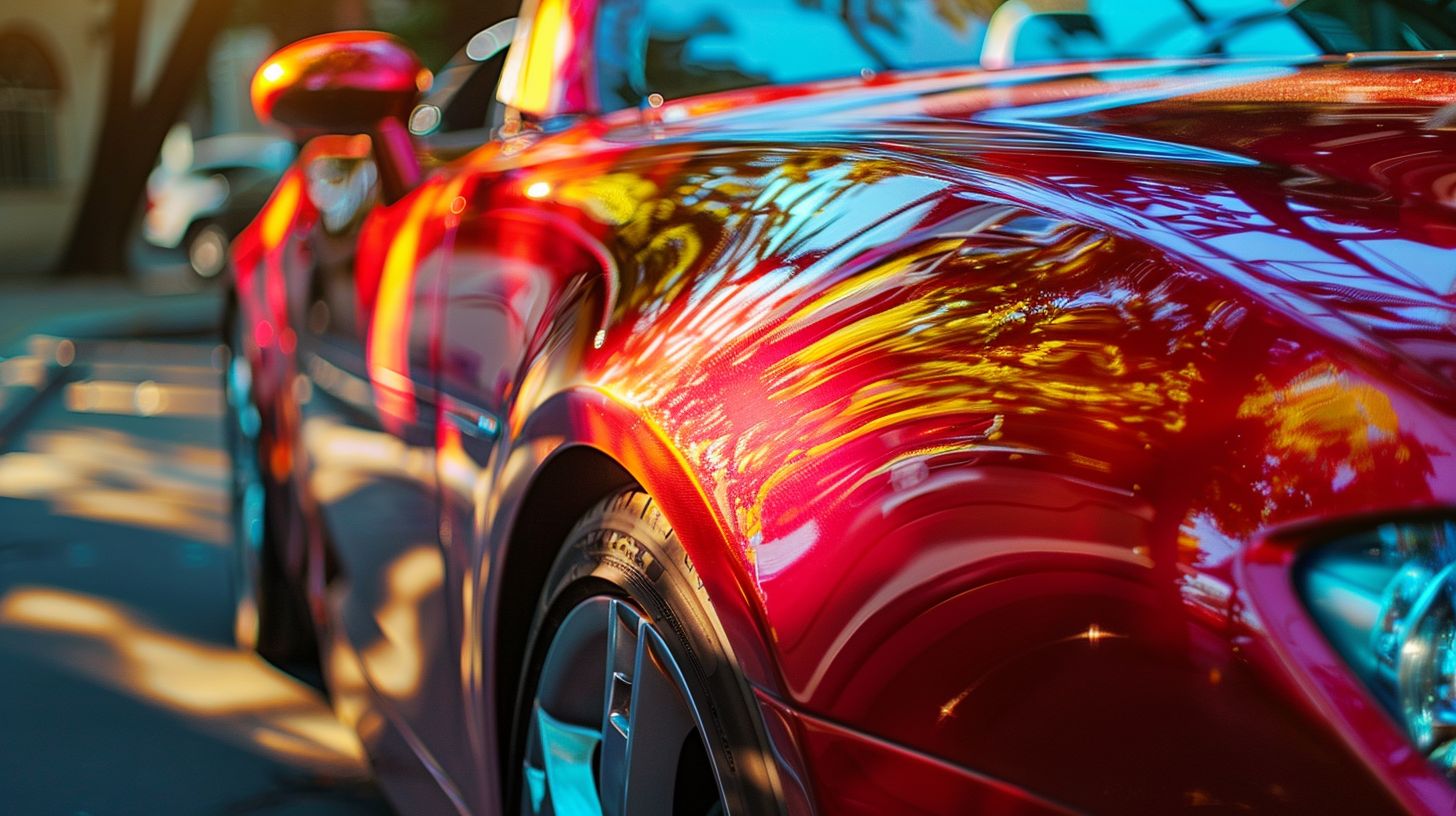
Paint correction creates a perfect canvas, but without protection, imperfections will quickly return. This is why Springs Detailing emphasizes the importance of applying protective coatings immediately after correction.
Ceramic Coating: The most popular choice for paint protection, ceramic coatings form a semi-permanent barrier against environmental damage. Paint correction before applying the ceramic coating is the best way to ensure the product’s best results. These coatings offer:
- 2-5 years of protection (4-8 years with XPEL)
- Enhanced gloss and water beading
- Easier maintenance with self-cleaning properties
- UV protection crucial for Colorado Springs elevation
Paint Protection Film (PPF): For ultimate protection, especially on high-impact areas, PPF provides a physical barrier against rock chips and scratches. When applied over corrected paint, PPF preserves that perfect finish indefinitely.
Professional Sealants: A more affordable option, modern paint sealants can provide 6-12 months of protection when properly applied to corrected paint.
Without protection, your investment in paint correction diminishes quickly. Environmental contaminants, improper washing, and daily driving reintroduce the very imperfections you paid to remove.
Suggested Reading: Paint Protection Film vs Ceramic Coating
Professional vs. DIY Paint Correction
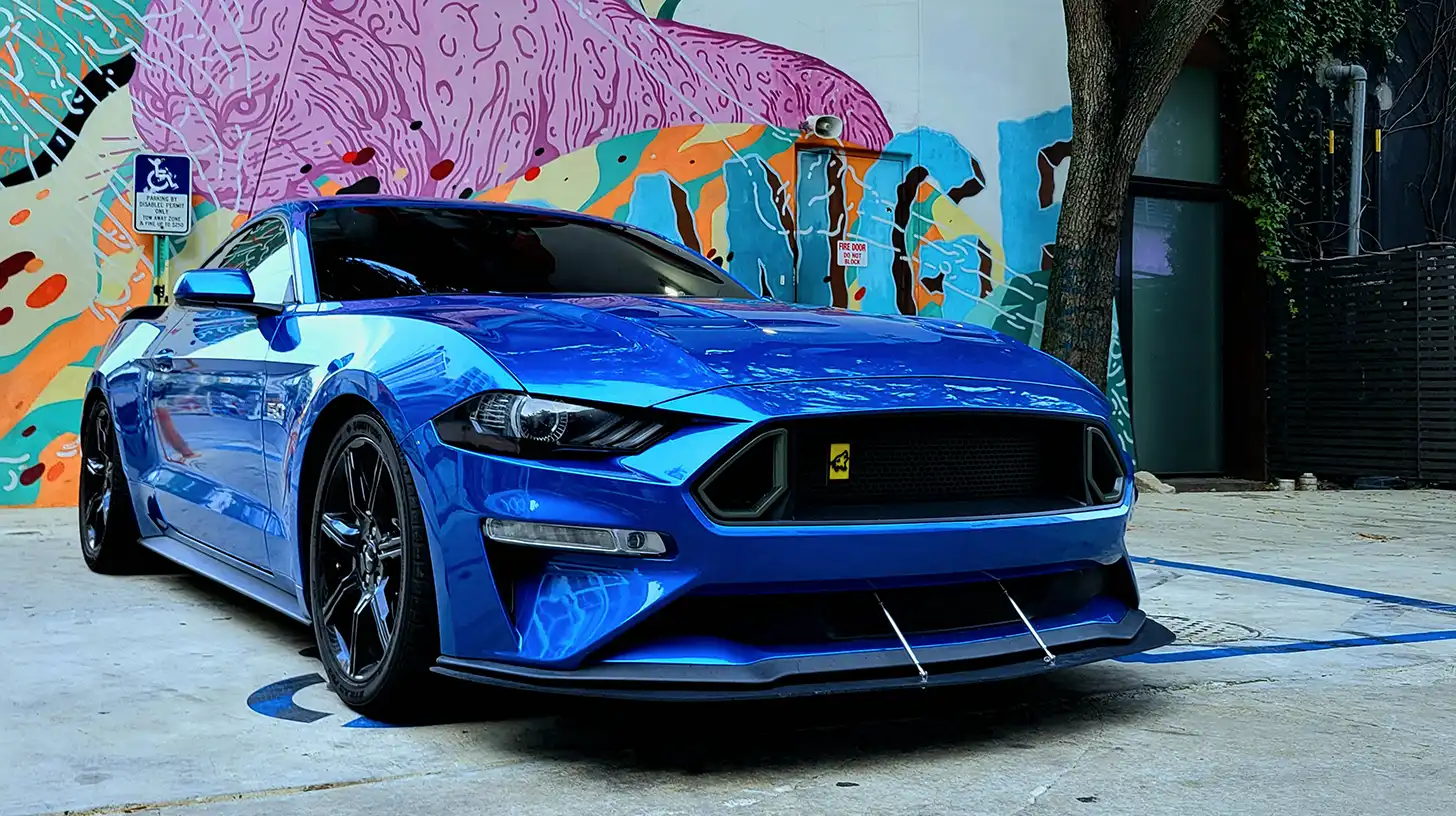
The accessibility of consumer-grade polishing products tempts many enthusiasts to attempt paint correction themselves. However, the risks often outweigh potential savings.
Professional paint correction requires:
- Specialized Equipment: Professional dual-action polishers cost $300-$600, plus hundreds more for quality pads and compounds
- Technical Knowledge: Understanding paint systems, clear coat thickness, and correction techniques takes years to master
- Risk Management: One mistake can burn through clear coat, requiring expensive repainting
DIY attempts frequently result in:
- Uneven correction with visible holograms
- Buffer trails from improper technique
- Heat damage from excessive pressure or speed
- Missed spots creating a patchy appearance
When it comes to paint correction, there isn’t really a material that you can see nor is there a “quality” install you can see. This invisibility makes professional expertise crucial—you won’t know if corners were cut until problems appear months later.
At Springs Detailing, our decades of experience mean we’ve encountered every paint type and challenge. We invest in continuous training and professional-grade equipment to deliver results that last.
Making the Investment Decision
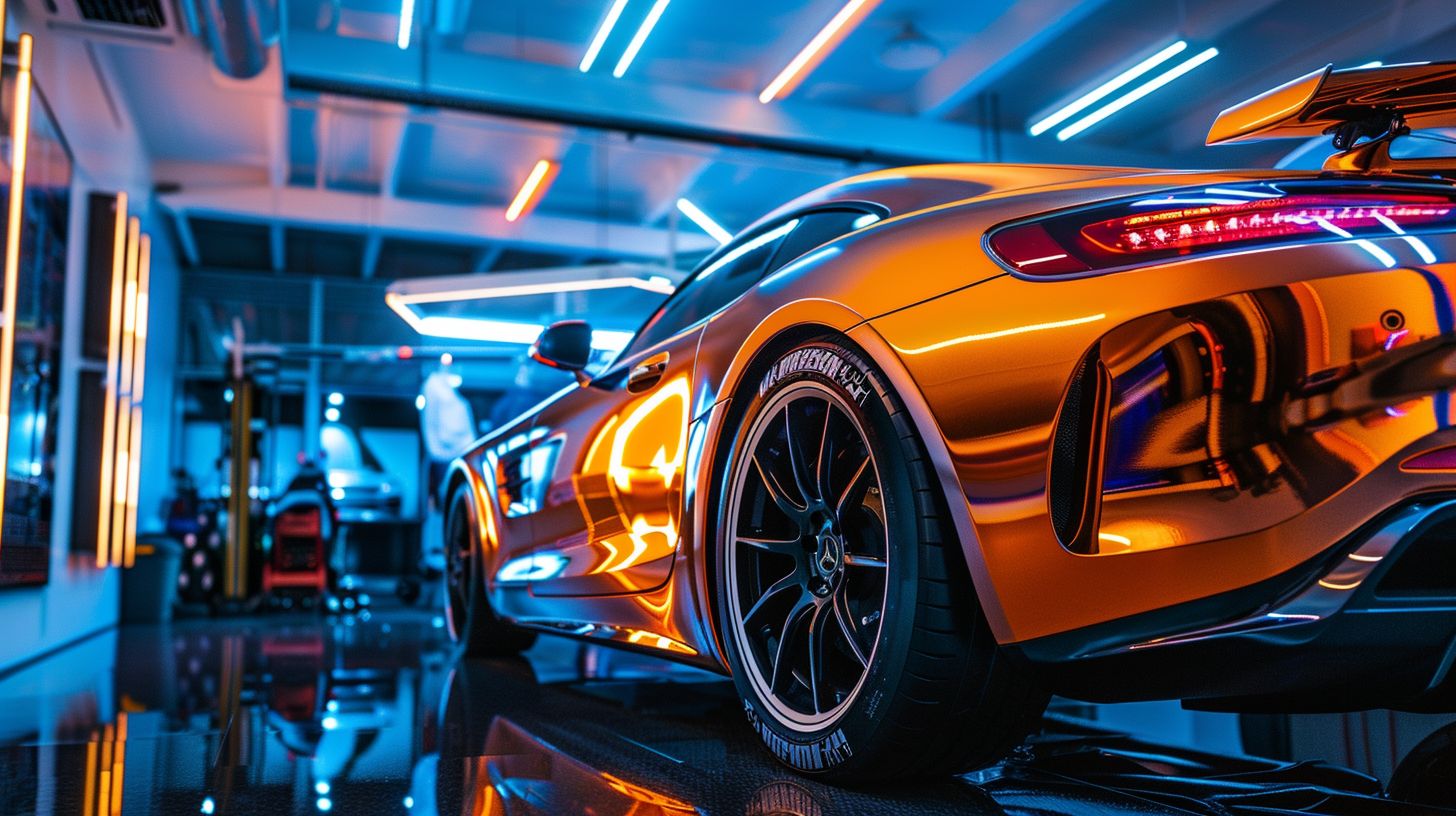
Determining whether paint correction is worth it for your vehicle requires honest assessment of your priorities and circumstances.
Paint correction is absolutely worth it if you:
- Plan to keep your vehicle for several years
- Take pride in your vehicle’s appearance
- Want to maximize resale value
- Drive a luxury or specialty vehicle
- Seek long-term paint protection
You might postpone paint correction if you:
- Plan to sell soon without addressing other maintenance
- Primarily use your vehicle for harsh conditions
- Have extensive paint damage requiring body work
- Cannot commit to proper maintenance afterward
For most Colorado Springs vehicle owners, the investment pays dividends. Our unique environmental challenges—from intense UV to winter road treatments—make paint protection especially valuable.
Remember, paint correction isn’t just about today’s appearance. It’s about preserving your vehicle’s beauty and value for years to come. When combined with proper protection and maintenance, professional paint correction transforms car care from a chore into preservation of your investment.
Further Reading: Clear Coat Restoration | Revive Your Ride’s Shine
Conclusion
Paint correction represents one of the smartest investments you can make in your vehicle’s appearance and value. While the initial cost may seem significant, the long-term benefits—from enhanced appearance to protected resale value—far outweigh the expense.
At Springs Detailing, we’ve built our reputation on transforming vehicles through meticulous paint correction. Our passion for automotive perfection means your vehicle receives the same attention to detail we’ve provided luxury dealerships for two decades.
The question isn’t really whether paint correction is worth it—it’s whether you can afford not to protect your investment. In Colorado Springs’ challenging environment, professional paint correction followed by ceramic coating or PPF isn’t a luxury; it’s essential maintenance for preserving your vehicle’s beauty and value.
Ready to fall in love with your car again? Contact Springs Detailing to discover how paint correction can transform your vehicle from ordinary to extraordinary.
Frequently Asked Questions
How long does paint correction last?
Paint correction permanently removes imperfections from your vehicle’s clear coat. However, without proper protection and maintenance, new swirl marks and scratches will develop over time. When paired with ceramic coating or paint protection film, the results can last several years or longer with proper care.
Can paint correction remove all scratches?
Paint correction can remove scratches that haven’t penetrated through the clear coat. Light swirl marks, water spots, and minor scratches typically disappear completely. Deeper scratches that reach the paint layer or primer require touch-up paint or body work before correction.
How often should I get paint correction?
Most vehicles benefit from paint correction every 2-4 years, depending on maintenance habits and environmental exposure. Vehicles with ceramic coating or PPF protection may go 5+ years between corrections. Regular washing and proper technique significantly extend the time between necessary corrections.
Is paint correction safe for my car’s paint?
When performed by trained professionals using proper equipment, paint correction is completely safe. Technicians use paint thickness gauges to ensure adequate clear coat remains. At Springs Detailing, we’ve safely corrected countless vehicles without compromising paint integrity.
What’s the difference between polishing and paint correction?
Polishing typically refers to light enhancement that improves gloss without removing significant clear coat. Paint correction is a more intensive process that actually removes measured amounts of clear coat to eliminate defects. Think of polishing as a facial and paint correction as cosmetic surgery.
Do I need paint correction before ceramic coating?
Most reputable ceramic coating brands specify paint correction as a required step before application. Ceramic coatings amplify your paint’s current condition—including imperfections.
Can I just get ceramic coating without paint correction?
While technically possible, applying ceramic coating over uncorrected paint locks in existing imperfections and may result in premature coating failure. For optimal bonding and longevity per manufacturer specifications, paint correction is a smart investment.
How do I maintain my car after paint correction?
Proper maintenance is crucial for preserving paint correction results. Use pH-neutral car shampoos, microfiber wash mitts, and the two-bucket wash method. Avoid automatic car washes, and consider professional maintenance washes.

